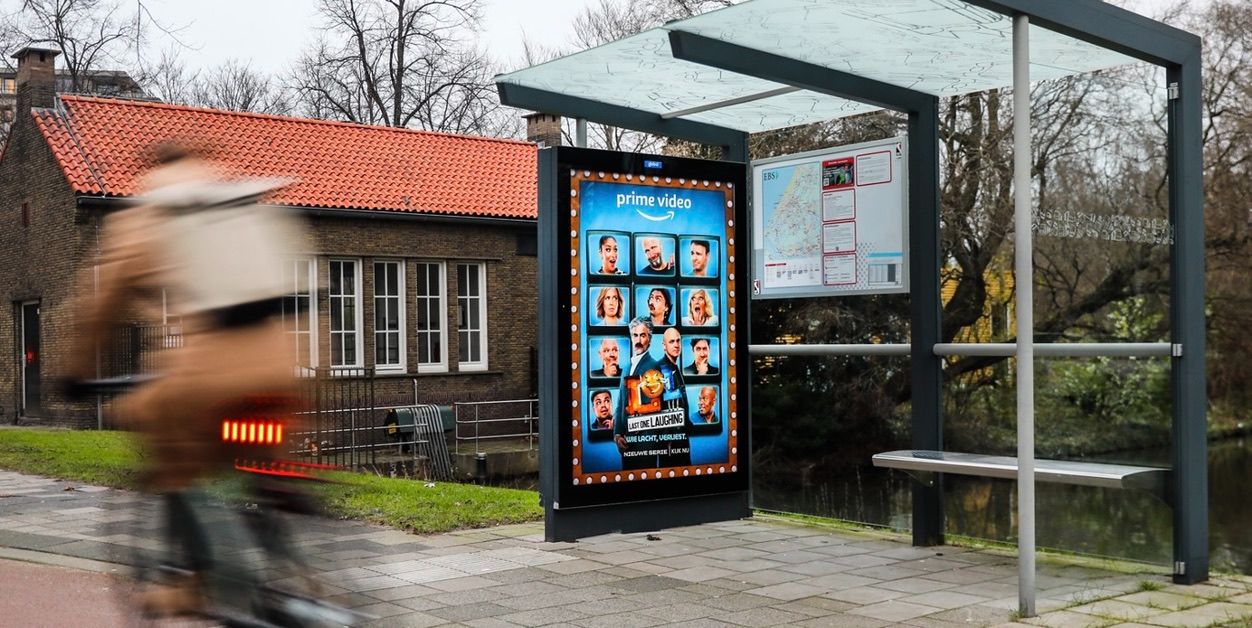Have you ever seen someone's face on a Bus Bench and wondered how they got their advertisement in such a place? Street Furniture advertising reaches audiences in urban and suburban areas as they go about their daily routines. Street furniture consists of public fixtures and amenities, including Benches, Bus Shelters, Trash Cans, and Kiosks.
In this article, you'll learn the benefits of Street Furniture advertising. You'll learn why it's popular amongst both brands and consumers.
What is Street Furniture Advertising?
Street Furniture advertising usually involves placing Posters or Billboards on public amenities. These advertisements can be static, digital, or even interactive screens.
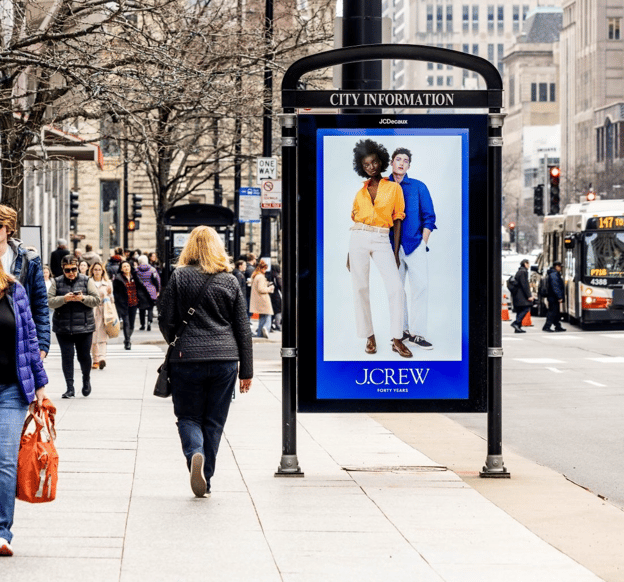
Street Furniture advertising is commonly viewed as affordable. Larger formats, such as Billboards, tend to cost more. It can be part of an effective marketing strategy, helping businesses target specific demographics or geographic areas.
What are Some of the Different Formats of Street Furniture Advertising?
Street Furniture advertising comes in a multitude of formats. Street-level, public amenities, and fixtures help advertisers communicate to pedestrians and vehicular traffic. Here are a few of the many types of Street Furniture advertising formats available:
- Bus Shelters: Bus Shelters provide a captive audience of those waiting for public transportation as well as cars passing by. Consumers can view ads from different vantage points, as ads can appear outside or inside the Bus Shelter.
- Kiosks: These small structures can advertise, provide information, or sell products. They are often found in pedestrianized public areas such as parks and squares.
- Newsstands: Ads placed on the exterior of Newsstands can entice your audience while they browse the day’s headlines.
- Other Formats: Advertisers can also put their messages on other types of Street Furniture. Benches, Trash Cans, Solar Recycling Kiosks, Bike Shares, and Bike Racks are a few possibilities. Advertisers can place ads on these structures or incorporate the units into their designs.
- Digital Street Furniture: More and more Street Furniture advertisements are becoming digital. Digital screens allow dynamic and eye-catching displays.
One of the reasons Street Furniture is so popular with advertisers is there are so many options available.
What are Some Great Examples of Street Furniture Advertising?
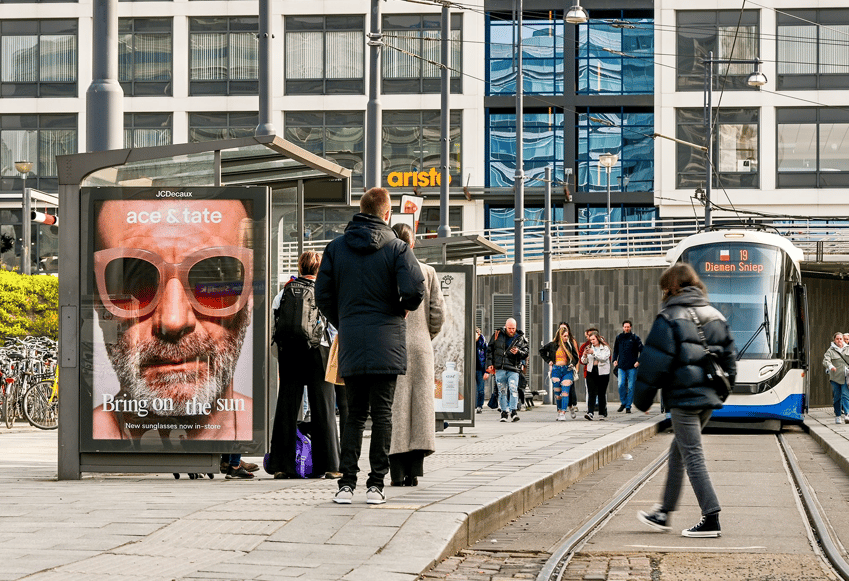
Ace + Tate created this multi-market and multi-format campaign that included Street Furniture.
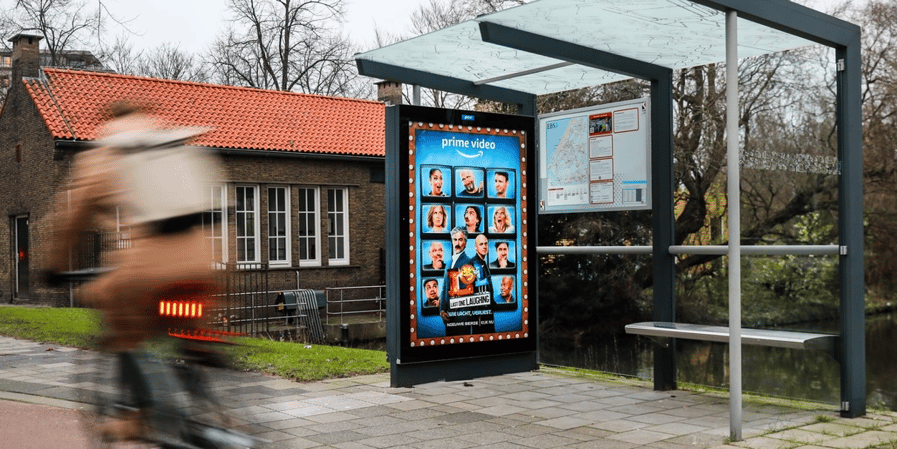
Amazon Prime Netherlands for the LOL Comedy Program launched a multi-market and multi-format campaign.
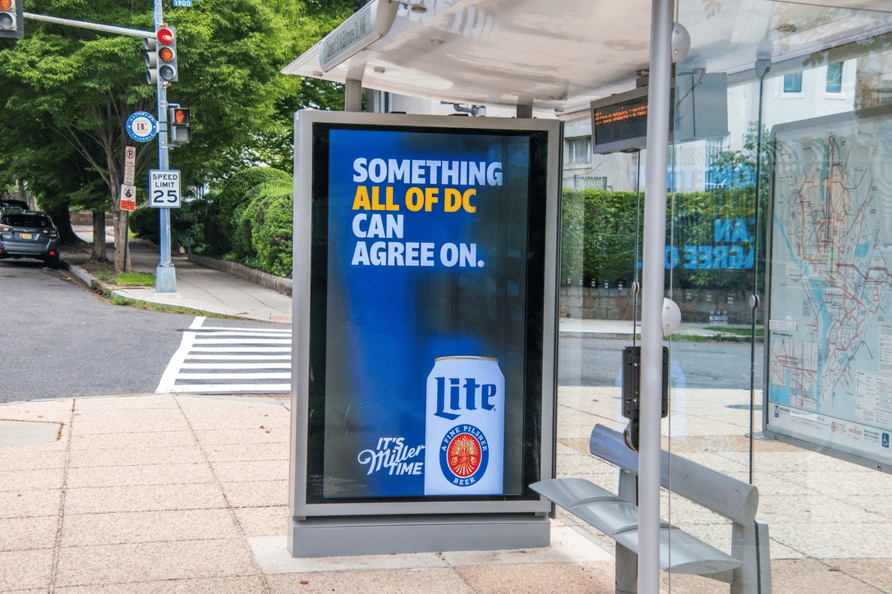
Molson Coors/Miller Lite executed a multi-format campaign with hyperlocal messaging using Street Furniture advertising.
Why is Street Furniture Advertising So Popular?
Street Furniture Advertising is most prevalent in urban and suburban areas. For example, in NYC, street furniture is found in the heart of and throughout the city. These areas have high pedestrian and vehicular traffic. Street furniture advertisers can range from small local brands to international companies. Often fashion and luxury brands use Street Furniture advertising in top markets.
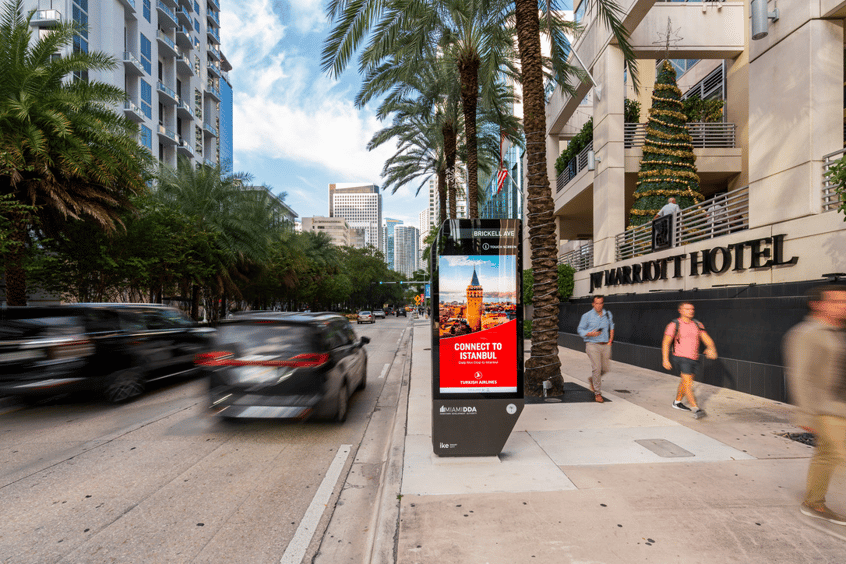
But this type of advertising works for a variety of industries. As mentioned earlier, there are various options for advertisers to choose from. But there are other benefits to Street Furniture Advertising, including:
- Dwell Time: Units placed in pedestrian areas often have longer dwell times. This allows for lengthier or more complex copy because people have more time to engage with your ad.
- High Visibility: Because they are in high-traffic areas, people are likely to see them.
- Cost-effective: It can be less costly than other outdoor advertising forms, making it an attractive option for businesses with limited budgets. Prices depend on many factors, including the location and size of the advertisement. But average costs for Street Furniture range from under $100 to a few thousand dollars per month.
- Customized Targeting: Brands can target specific demographics or geographic locations. But advertisers also use Street Furniture for broad reach and general awareness.
- Multiple Touchpoints: People may encounter the ads several times throughout their daily routine, increasing the likelihood of message recall.
- Flexibility: Street Furniture advertising can be used for various marketing purposes. Advertisers use it for brand awareness, product launches, and promotions. Businesses can easily align campaigns with their marketing goals and objectives. There's also great flexibility in planning Street Furniture Advertising campaigns. Advertisers can buy Street Furniture as part of a larger package or one unit to target a local store.
- Hits both Pedestrians and Motorists: Street Furniture advertising can more heavily target pedestrians or motorists depending on the market and geography. For example, most Transit Shelters reach vehicular traffic in LA, a commuter market. In contrast, in San Francisco, packages might, for instance, target conference attendees. Those Transit Shelters may reach pedestrian conference attendees on their way to the conference center.
- Creativity: There are many formats and unique ways to position the advertisement so that it interacts with the Street Furniture and its environment.
- Digital Options: Digital can be faster to turn around and cost less for production than static. Street Furniture Advertising offers both digital advertising displays and static options.
- Encourages Consumer Engagement: Street Furniture reaches consumers through useful public amenities. Consumers interact with formats like Bike Racks, Kiosks, Bike Shares, or Benches. Street Furniture ads are also sometimes attached to wayfinding. This means they are located near maps of the local area that help audiences find their destination.
- Brands of All Sizes Benefit: It provides exposure for small local businesses and large national chains.
- Complements Other Formats: Street Furniture combines well with corresponding transit or bus ads. It can also supplement larger formats like Billboards to enhance recall.
What are Some Problems with Street Furniture Advertising?
Street Furniture advertising is a popular and effective marketing strategy. But there are a few factors to consider:
- Vandalism: Street furniture can be subject to destruction. Advertisers can use durable materials to combat defacement and removal.
- Location Restrictions: Some areas may have limited or restricted Street Furniture advertising opportunities. Working with an OOH Specialist can help you find effective placements. They are familiar with your audience and the markets. They know the inventory available and local market regulations.
- Maintenance: Street furniture advertising requires regular maintenance. This ensures that the ads are visible and in good condition. Schedule regular maintenance to ensure your ads stay intact.
What Does the Future Hold for Street Furniture Advertising?
Street Furniture advertising will continue to be a favored medium. Several trends will likely shape the industry in the coming years. Here are a few directions that Street Furniture advertising may take:
- More Digitalization: More and more Street Furniture units include Digital Displays. These create more dynamic and engaging viewer experiences.
- More Personalization: Data-driven advertising could create more personalized street furniture advertising. Programmatic buys for Digital Street Furniture are another possibility. PDOOH may allow for faster ad placements. It can also allow targeting based on factors such as time of day or weather conditions.
- More Sustainability: The environment and climate change concern many. This could lead to more sustainable OOH advertising and eco-friendly Street Furniture units. Some areas are already implementing recycled materials, greenery, and solar panels.
- Different Buying Opportunities: Packages allow advertisers to buy targeted Transit Shelter ad space. This may expand to other packages and more targeted buying opportunities.
Street Furniture Advertising will likely remain popular amongst brands and consumers alike. As technology evolves, expect more digitalization, personalization, and advanced analytics.
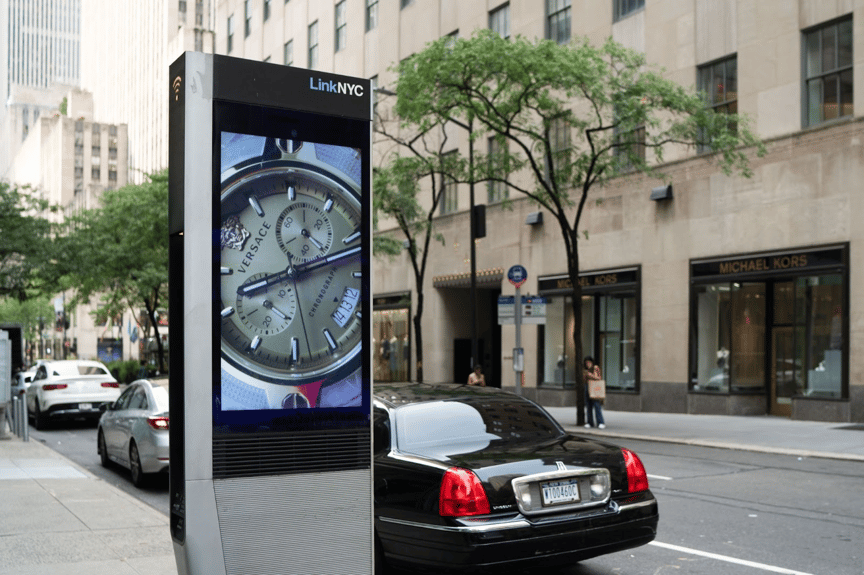
How Does Street Furniture Advertising Fit into Your Overall OOH Strategy?
Street Furniture advertising often complements other OOH formats, such as Billboards and Transit advertising. Multiple formats help brands create a cohesive, integrated OOH experience for their audiences. Street Furniture advertising can play a valuable role in an OOH advertising strategy. It targets street-level audiences where pedestrians have time to take in the message, as well as motorists passing by, depending on the market. Street Furniture advertising helps brands engage consumers in various settings and contexts, generating brand awareness and recall and driving foot traffic and sales. Want to learn more about how you can add Street Furniture advertising to your OOH campaign plan? Reach out to Billups!
